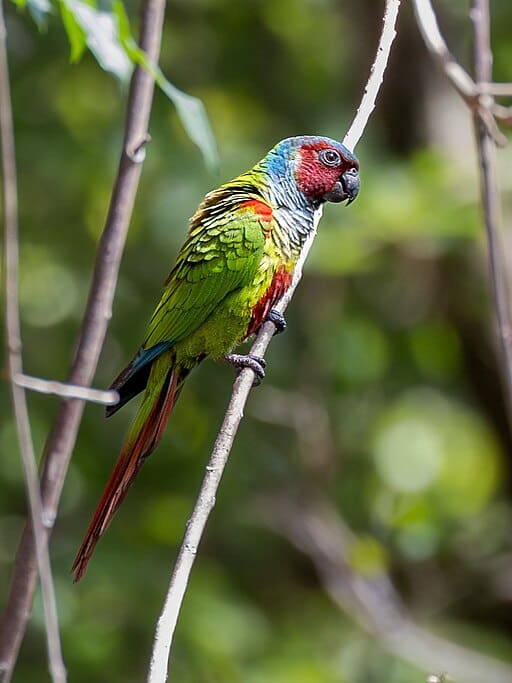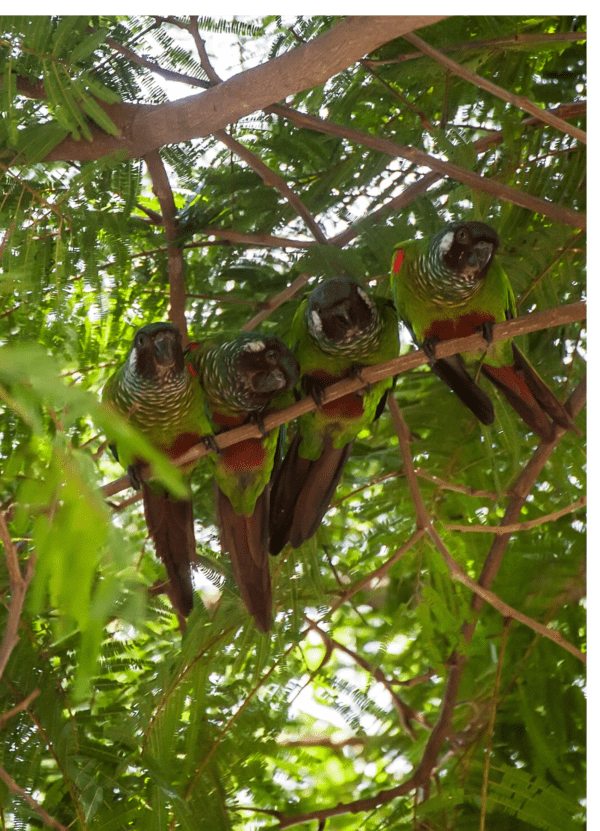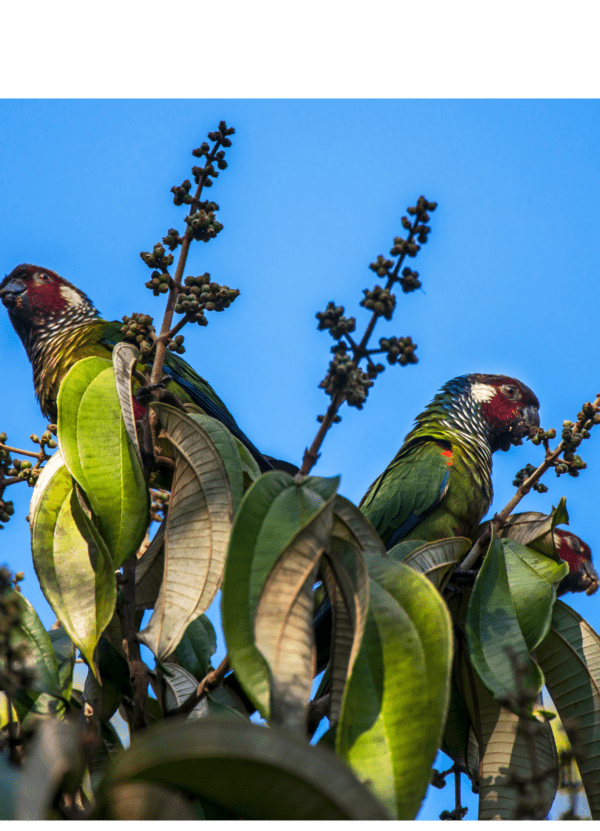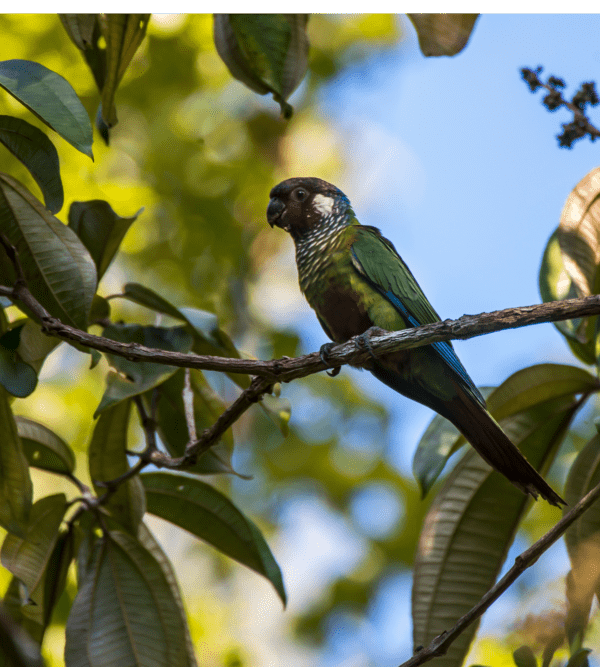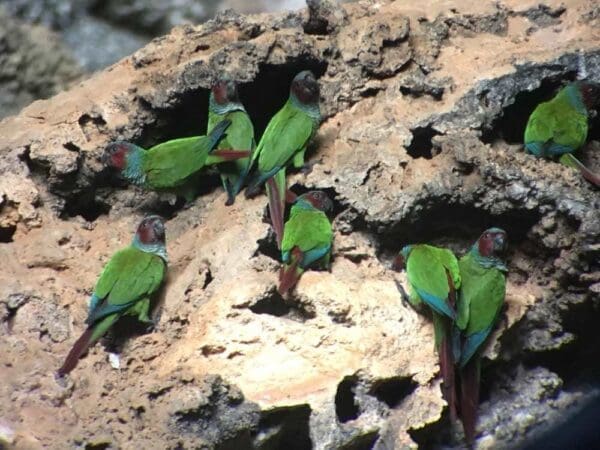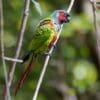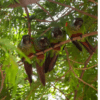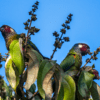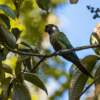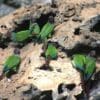Pfrimer’s Conure
Also known as:
Maroon-faced Conure or Parakeet, Pfrimer's Parakeet, Goiás Parakeet
Also known as:
Maroon-faced Conure or Parakeet, Pfrimer's Parakeet, Goiás Parakeet
DID YOU KNOW?
The Pfrimer’s Conure was once a subspecies of the White-eared Conure, Pyrrhura leucotis.

Pyrrhura

pfrimeri
Size:
22 cm (8.6 in)
Weight:
Not recorded.
Subspecies including nominate:
one
Colour Adult:
Both adults brown/red face and ear coverts; dull blue crown to hindneck; dull green/blue throat, the feathers having white margins; blue/green breast barred with white and dark brown; brown/red centre of abdomen and patch on lower back to upper tail coverts; red bend of wing; maroon tail with green at bases of outer webs of lateral feathers. Beak grey/black. Eye ring grey/white. Eye brown/orange.
Colour Juvenile:
As in adults.
Call:
As in White-eared Conure, in flight sharp notes repeated rapidly three or four times; also high-pitched, short notes and small peeps while perched.
More Information:
Content Sources:
BirdLife International
Cornell Lab of Ornithology/Birds of the World
A Guide to Parrots of the World, Juniper and Parr, 1998
Parrots of the World, Forshaw, 2006. 2010 edition
Vanished and Vanishing Parrots, Forshaw, 2017.
Parrots in Aviculture, Low, 1992.
Lexicon of Parrots, Thomas Arndt.
Captive Status:
Rare in captivity.
Longevity:
Probably 13-15 yrs
Housing:
Aviary or suspended enclosure, minimum length 2 m (6.5 ft).
Diet:
(Based on diet for the White-eared Conure, once a conspecific) Fruit such as: apple, pear, banana, orange, cactus fruits, pomegranate, forming 30 percent of the diet; vegetables such as: carrot, celery, green beans, peas in the pod; fresh corn; green leaves such as: Swiss chard, lettuce, sowthistle, dandelion, chickweed; spray millet; small seed mix such as: canary, millet, and smaller amounts of oats, buckwheat, safflower and a little hemp; soaked and sprouted sunflower seed; cooked beans and pulses, boiled maize, and complete pellet.
Enrichment:
Enjoys bathing, so provide overhead misters or shallow bathing bowls of water; also needs space, as is avid flier. Also is a vigorous chewer, so provide bird-safe, unsprayed flowering, fir, pine and willow branches, wooden toys, vegetable tanned leather toys, heat sterilized pine cones and puzzle/foraging toys.
Nest Box Size:
Vertical box 8″ x 8″ x 28″ (20.3 cm x 20.3 cm x 71 cm).
Clutch Size:
3-8
Fledging Age:
6-7 weeks
Hatch Weight:
—
Peak Weight:
—
Weaning Weight:
—
World Population:
12,000-20,000 mature individuals, decreasing.
IUCN Red List Status:
Endangered
CITES Listing:
Appendix II
Threat Summary:
It is suspected to be declining very rapidly due to deforestation driven by selective logging, fires and habitat conversion to pasture or soybean plantations. Ongoing work suggests fewer than 50,000 individuals are remaining, a loss of up to 75% of the population.
Range:
Recorded only from Serra Geral massif and Rio Paraná, northeastern Goiás and southeastern Tocantins, Brazil.
Habitat:
Found up to 600 m (1968 ft) in semi-deciduous or deciduous forest on limestone outcrops.
Wild Diet:
Diet includes flowers of Tabebuia impetiginosa, Bauhinia; fruits of Ficus gomeleira, cultivated Psidium guajava, and seeds of Hyptis, as well as Cecropia catkins. Also includes cultivated rice Oryza sativa, fruits of Ficus gomeleira, fruit pulp of Pouteria, flower clusters of Maclura tinctoria, young leaves of Astronium urundeuva, shoots of Psittacanthus insects and their larvae.
Ecology and Behaviour:
Social, usually seen in flocks of up to 10 birds. Noisy and conspicuous in flight above canopy. Quiet and easily missed while feeding or resting in foliage.
Clutch and Egg Size:
3-8 rounded eggs, 26.5 x 20.5 mm (1 x 0.8 in).
Breeding Season:
Reported in April-June. Nest is possibly in cavity in limestone rock face.
